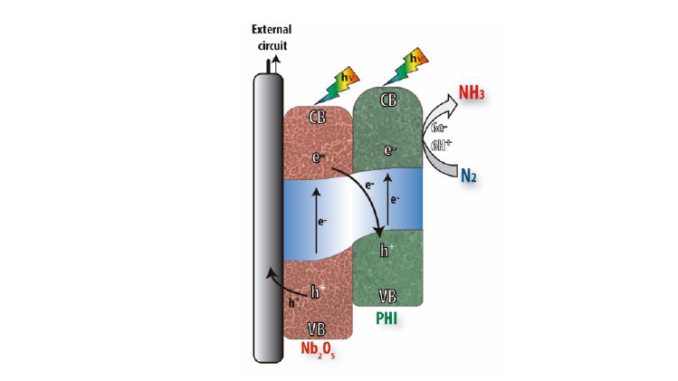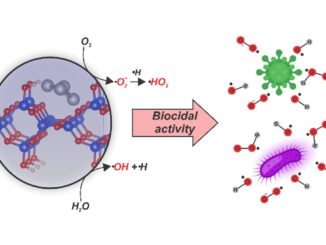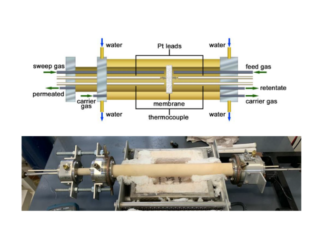
Direct Z-scheme among Niobium Pentoxide and Poly(heptazine imide) for NH3 Photoelectrosynthesis under Ambient Conditions
Abstract: There is a crescent need to improve well-known processes to environmentally friendly options, and NH3 production is not an exception. Herein, we describe the photoelectrochemical nitrogen reduction reaction under a carbon nitride, the poly(heptazine imide) (PHI) using mild conditions for NH3 synthesis. For this purpose, PHI was combined with Nb2O5 nanotubes, leading to a new photocathode with a charge transfer process in a Z-scheme structure. The photoelectrocatalytic N2 reduction was carried out in Nb2O5Nt/PHI using solar-simulated radiation and with an applied bias of −0.3 VAg/AgCl. The PHI presence in the photocathode showed not only superior stability compared to bare Nb2O5, but also an ammonia generation rate of 0.156 mmol L-1 h-1 cm-2, which is about 10-fold higher than the amount obtained with niobium oxide alone. The mild and green conditions employed for ammonia generation place the obtained photocathode as a promising option for the currently used Haber-Bosch process.
Author(s): Blaskievicz, S.F.; Teixeira, I.F.; Mascaro, L.H.; Brito, J.F.
ChemCatChem 2023
Published: 16 January 2023
DOI: https://doi.org/10.1002/cctc.202201610
CDMF
The CDMF, hosted at the Federal University of São Carlos (UFSCar), is one of the Research, Innovation and Dissemination Centers (RIDC) supported by the São Paulo State Research Support Foundation (Fapesp), and also receives investment from the National Council Scientific and Technological Development (CNPq), from the National Institute of Science and Technology of Materials in Nanotechnology (INCTMN).




